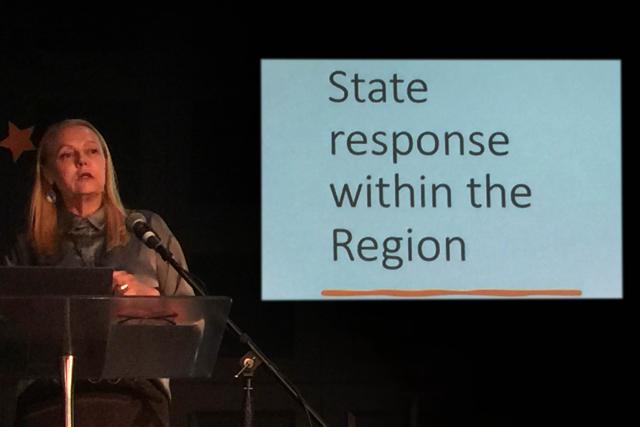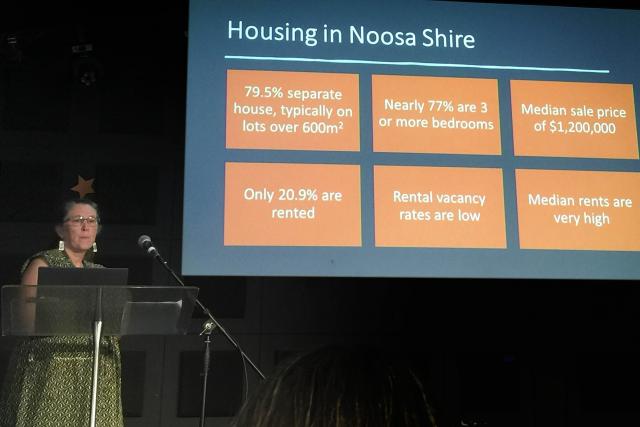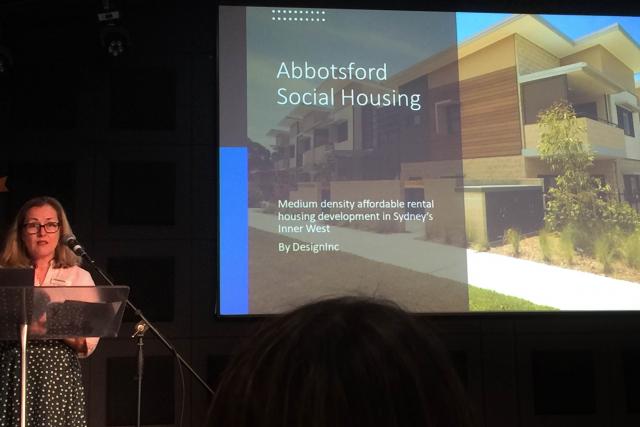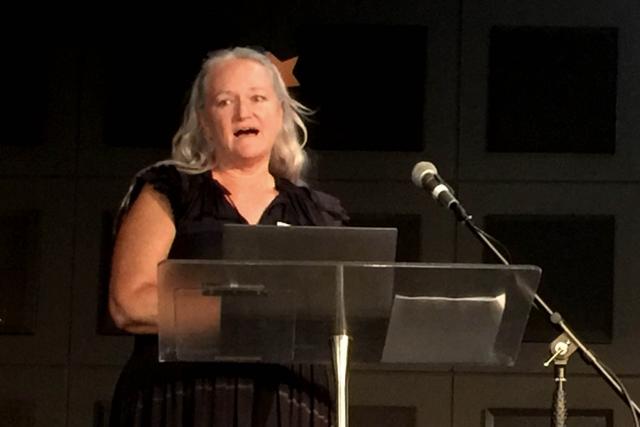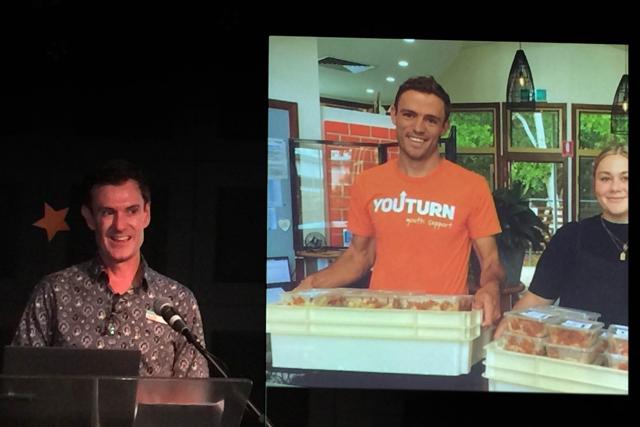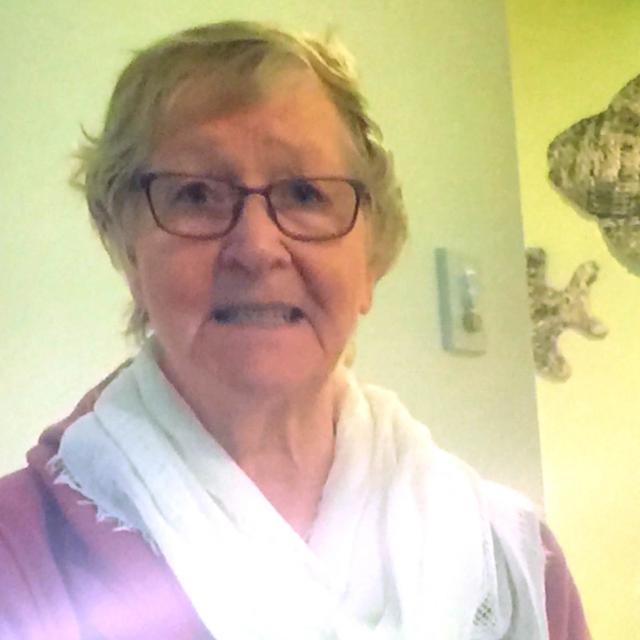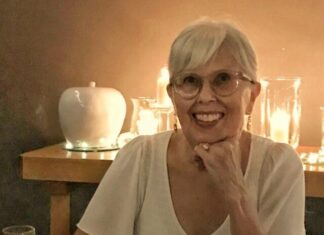The community has been called on to help their neighbours during the current housing crisis until government investment in affordable housing comes to fruition, expected to occur in two years.
Noosa Council has a vision of an inclusive community where everybody has access to safe, secure housing they can afford, council’s CEO Scott Waters told last week’s housing forum, at which stakeholders came together to unpack Noosa’s current housing crisis.
Mayor Clare Stewart said there was no one solution but a community committee had varying ideas for a way forward and council were committed to an end goal.
Council’s community services director Kerri Contini, a resident of more than 40 years, talked about a Noosa that had been home to artists, surfers and restaurant owners in which housing was affordable, but that has changed.
We have long term locals considering if they can remain and their children not able to afford to live in the community, she said. We see businesses not able to operate because they have no staff. People can’t get care for their parents because carers have no where to live.
Through technology the audience provided their own stories of working families who can’t afford to live in Noosa, people living in their cars, young people being forced to leave the area to look for affordable accommodation and the divide between the haves and have nots widening.
Ms Contini said statistics showed almost 80 per cent of housing in Noosa was made up of separate houses, 77 per cent three bedroom houses, and the median price was $1.5 million. Rental properties make up about 20 per cent with vacancy rates as low as 0.6 per cent in Tewantin and up to 3.9 per cent in coastal areas with median rental costs per week for a house $1500, one-bedroom unit $390, three-bedroom unit $690 and four-bedroom $850.
Ms Contini said there was a lot of capacity for existing houses to take in more people with two-thirds of households lived in by 1-2 people.
Figures show Noosa is not a highly paid community with median entire household income about $1470 per week and many in Noosa’s workforce employed in areas of accommodation and food (15 per cent), health care (14 per cent), retail (13 per cent) and construction (8 per cent). Full time workers are comprised of 25 per cent of people aged 15-24, 50 per cent of people aged 25-54 and 40 per cent of people over 55 years.
Of those more than 25 per cent live outside the shire and 25 per cent live in the hinterland, she said.
To deal with the situation the forum heard businesses were providing rentals to workers, workers were living in people’s sheds, sleeping in cars, caravans and tents, some were driving 1.5 hours each way to work and some were reducing the number of days worked.
Darce Foley, general manager of Youturn youth support, a not-for-profit organisation begun 30 years ago, which provides support to youths and families and crisis accommodation, provided examples of local people struggling with housing affordability.
Among them was Mary (not her real name) who had rented a home in Tewantin for 20 years and worked as a cleaner. When her rent was increased $60 a week she bought a van to live in, expecting rents to return to affordable rates, but that hasn’t happened and she now sleeps in her van, moving it from place to place.
Youturn told the forum the hinterland was seeing more women who can’t afford their rent and were moving into tents, disrupting the lives of children and losing their support networks and the organisation was also seeing women remaining in unhealthy relationships because they had nowhere to go.
Coast2Bay housing provider chief operating officer Lee Banfield introduced the forum to Wendy, one of their tenants, who was provided with community housing when her husband became ill. Her home is owned by a private investor who rents it through Coast2Bay.
“I’m grateful to the investor supporting community housing,” Wendy said. “I feel part of the community. My husband is now in residential care so housing security is more important. When you’re on your own you have to feel secure. I can shut my door and feel secure. For me community housing is an absolute lifeline. There are others out there just as desperate – I was.”
Noosa MP Sandy Bolton told the forum after 30 years of inadequate spending by governments the current situation did not come as a surprise.
When she moved to Noosa 35 years ago Ms Bolton and her children lived in a shed with no power or water.
“I saw my shed rented for $650 a week. That was an indicator we were in for a rough ride,” she said.
Ms Bolton said during Covid while people were flooding in to the region escalating rentals and property prices her office was contacted by 4-5 local families a day seeking accommodation. “These are our parents, our children, our loved ones,” she said. The impact is increased domestic violence, increased mental illness. It impacts every single member of the community, she said.
“We need 50,000 affordable rentals right now across Queensland. National housing board has committed to building 30,000 nationally over the next five years.
But money is now being injected into affordable housing from state and federal governments.
A first site has been purchased in Doonella Street, another site will be announced before June and four DV units will be announced shortly, Ms Bolton said.
Working with church organisations a further three sites are being investigated.
“There’s a lot going on. The problem with that is – time is not on our side. It’s going to take at least two years for the money to come in. Then we can’t get builders and materials. It’s adding to the difficulties being faced.
“We desperately need temporary accommodation to get us through these two years.
“It’s so important the community supports us and think about sub-leasing, property sharing and how to assist over the next two years.”
Councill’s strategic planner Rowena Skinner told the forum contemporary social housing had changed from ugly low cost developments created in the past to better reflect local needs.
Noosa has about 400 social housing dwellings and it has not had a big impact on the price of housing, she said, and bonuses are available to developers to include some affordable housing in development applications.
Ms Skinner said right now residents could be doing something to help by taking in a boarder, renting out a granny flat, renting an investment house through a housing provider such as Coast2Bay, allowing a tiny house on your block of land or renting your short-term accommodation out to a permanent tenant.

